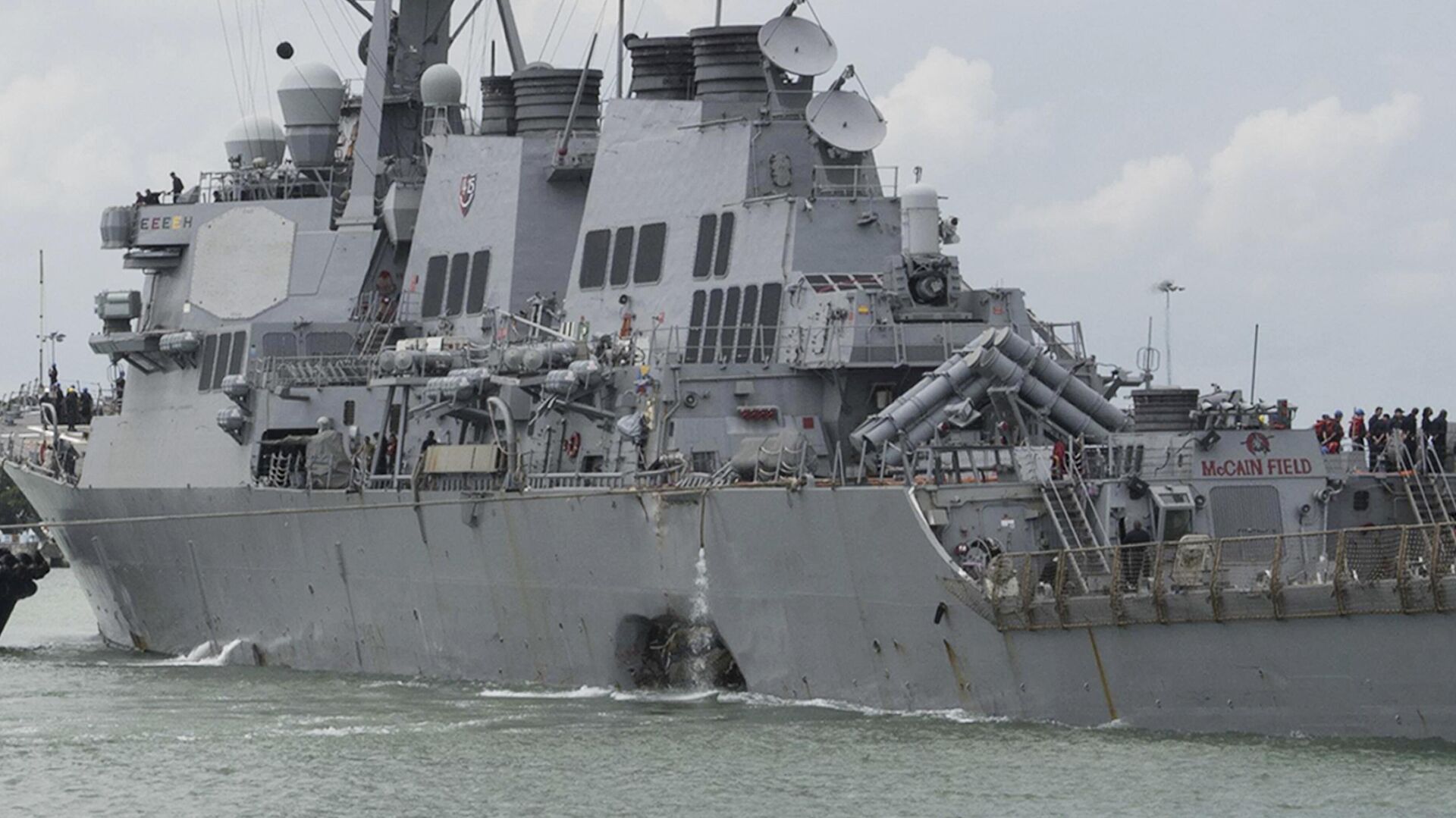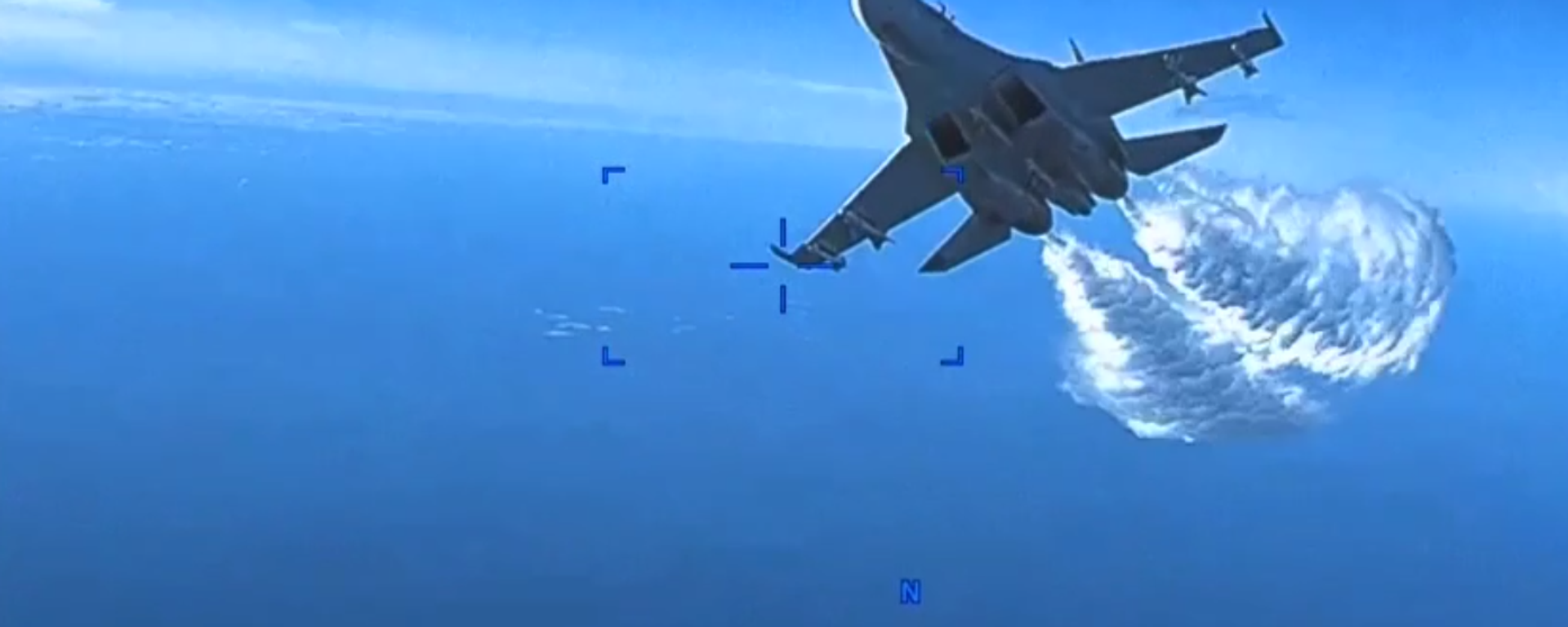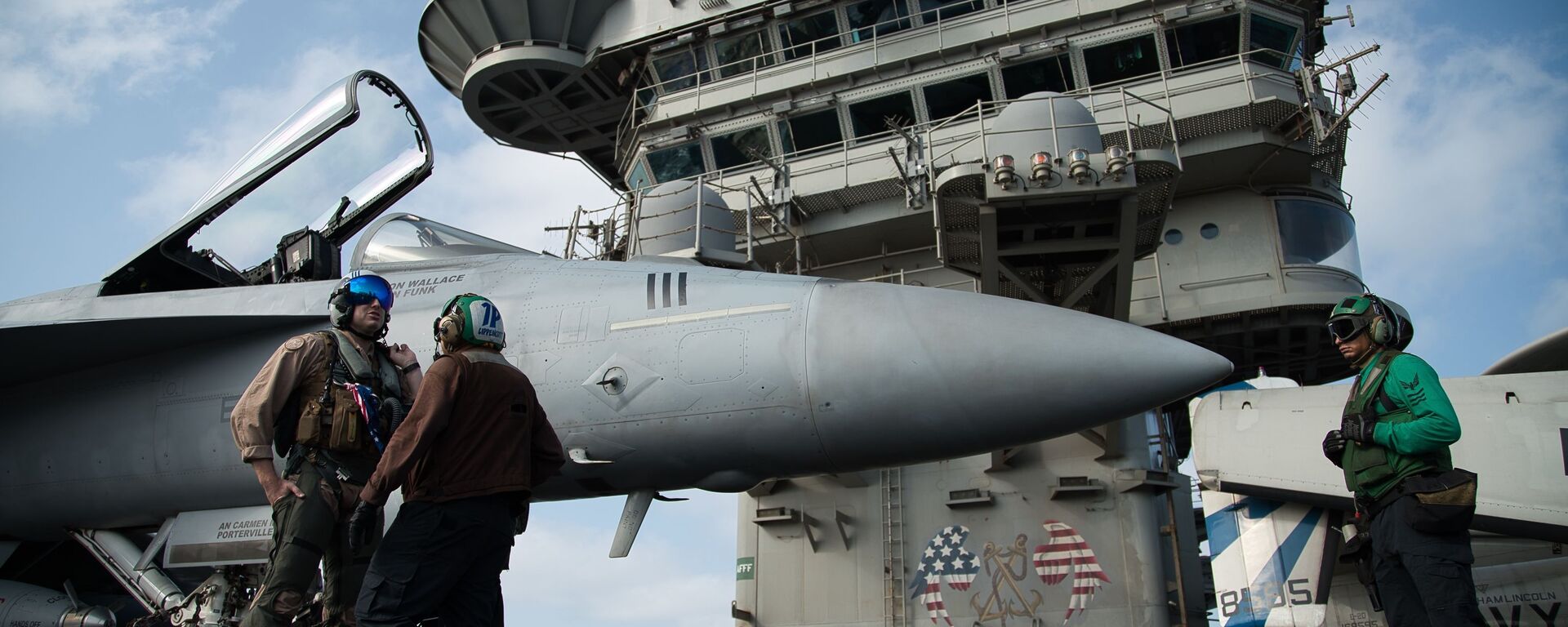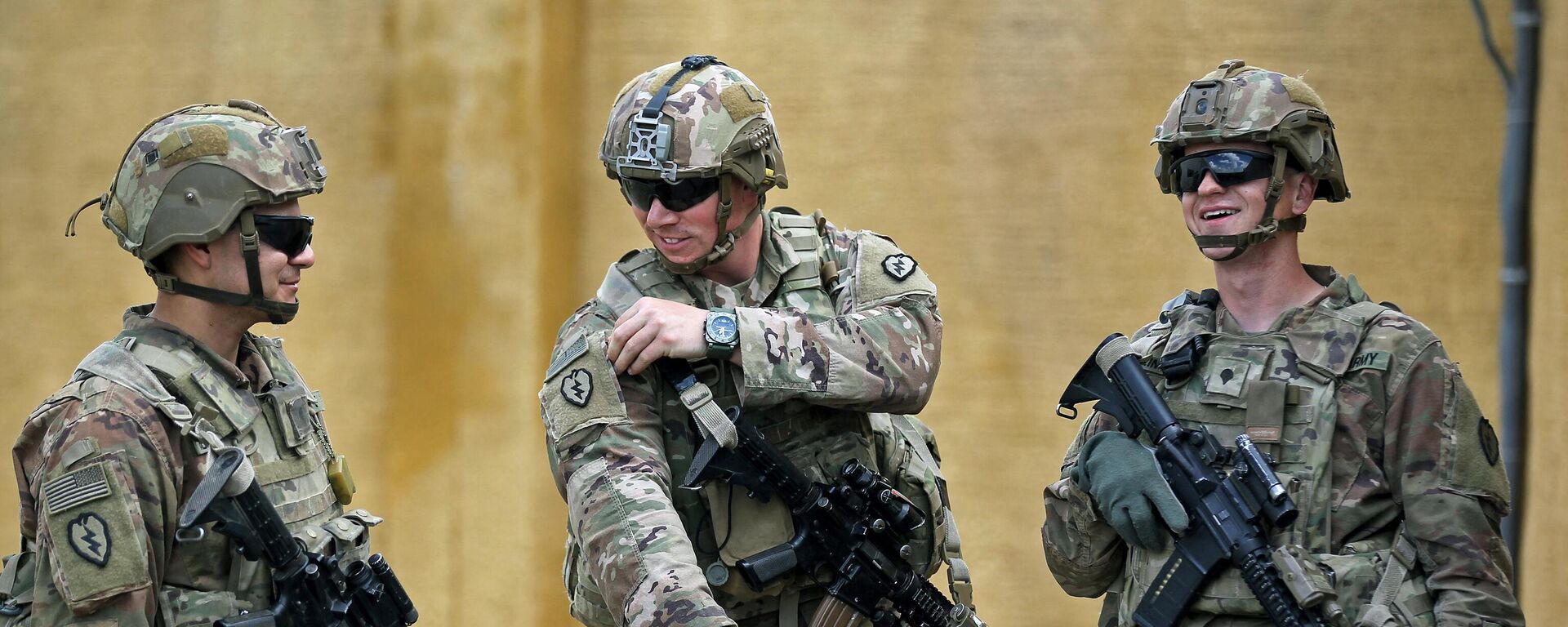https://sputnikglobe.com/20240914/navy-faces-breakdown-in-discipline-effectiveness-as-us-military-stretched-thin-1120143759.html
Navy Faces Breakdown in Discipline, Effectiveness as US Military Stretched Thin
Navy Faces Breakdown in Discipline, Effectiveness as US Military Stretched Thin
Sputnik International
Author and 30-year veteran of the US Defense Department Michael Maloof joined Sputnik’s Political Misfits program Friday to discuss the breakdown in discipline and effectiveness of the US Navy.
2024-09-14T05:02+0000
2024-09-14T05:02+0000
2024-09-14T05:07+0000
military & intelligence
michael maloof
joe biden
yemen
united kingdom (uk)
navy
pentagon
wi-fi
us military
us armed forces
https://cdn1.img.sputnikglobe.com/img/07e8/09/0e/1120144589_75:0:3716:2048_1920x0_80_0_0_7c6c02a93b75fc2d484b43cac7ae6bac.jpg
“Are they stopping the Houthis? No. Are they gonna continue? Yes.”Such was President Joe Biden’s response earlier this year when asked about the effectiveness of the US Navy’s strikes on Ansar Allah in the Red Sea.The armed group, which maintains control of a slice of western Yemen, has blocked Israeli ships from the crucial sea route since late last year in solidarity with Palestinians in Gaza. The United States along with its British ally has since attempted to defeat the Houthis’ blockade, causing the group to expand it to US and UK-flagged ships as well.Biden is well known for his tendency towards verbal gaffes but the comment made headlines as a particularly poignant encapsulation of the futile US effort. Reports indicate that the use of drones, as elsewhere, has upended conventional wisdom, with the United States’ expensive equipment outmaneuvered via low-cost unmanned aircraft.But the US Navy’s failure to adapt to the modern realities of asymmetric warfare is not the only way it is falling short, according to numerous critics. Author and 30-year veteran of the US Defense Department Michael Maloof joined Sputnik’s Political Misfits program Friday to discuss the breakdown in discipline and effectiveness of the service.“In August USNI, the US Naval Institute News, reported that the military sealift command, which operates the logistics ships that refuel and supply naval ships, might have to sideline 17 support ships for a lack of manpower,” noted host Michell Witte. “It is not clear what this would do to the Navy's readiness, but I don't think our official position is that these are 17 totally superfluous ships.”A lack of manpower is increasingly causing problems across the US armed forces, with most services failing to meet recruiting goals for several years. The crisis has spurred the US to respond in a number of ways, primarily by loosening requirements for Americans to enlist. Military planners are seeking to reduce the manpower ostensibly required across a number of positions amid a major restructuring of the armed forces to fight an anticipated war with Russia and China in the Pacific region.But the Navy has also been plagued by disciplinary problems, with an embarrassing story emerging recently about the commander of a destroyer who was relieved of duty after displaying a rifle with a backwards-mounted scope on Instagram. “The image brought the Navy considerable ridicule on social media,” noted one report.Meanwhile the Navy Times reported a story earlier this month about more than a dozen chiefs and senior chiefs conspiring to install an unauthorized Wi-Fi system on a littoral combat ship – a serious security risk.“It's a sign of an overall breakdown of discipline and focus and attention,” said Maloof. “It also shows a very serious lack of strategic thinking and a breakdown in discipline, as I said, for those [routers] to be put on that ship. It was really a security breach and the chief, whoever she was that was involved in and responsible for that, should not have been downgraded, she should have been fired.”“During the Reagan administration we had a 600-ship Navy,” the analyst noted. “As of May of 2024 the Navy is down to 296 battleforce ships and it's only by 2030 they hope to come back up to 300, which is only half of what we had during the Reagan years in the ‘80s… Consider that we have actually increased our commitments around the world. In fact, they haven't diminished, they've increased and we're now fighting multi-front conflicts all at once now.”“We need better strategic thinking on just what our priorities really are in this world,” Maloof concluded. “Because we're fighting everybody's wars now and we're depleting our own supplies by providing weapons to proxies and it's affecting our own readiness as a consequence.”
https://sputnikglobe.com/20240908/houthis-shot-down-eighth-us-drone-mq-9-reaper-1120073624.html
https://sputnikglobe.com/20240808/which-us-navy-warships-are-deployed-in-middle-eastern-hot-spots--1119683142.html
https://sputnikglobe.com/20240228/world-war-iii-watch-us-army-restructuring-to-focus-on-large-scale-combat-1117030444.html
yemen
united kingdom (uk)
Sputnik International
feedback@sputniknews.com
+74956456601
MIA „Rossiya Segodnya“
2024
John Miles
https://cdn1.img.sputnikglobe.com/img/07e8/01/19/1116388787_0:0:1316:1316_100x100_80_0_0_77e70d36afd983012b1c5d38ddb84156.jpg
John Miles
https://cdn1.img.sputnikglobe.com/img/07e8/01/19/1116388787_0:0:1316:1316_100x100_80_0_0_77e70d36afd983012b1c5d38ddb84156.jpg
News
en_EN
Sputnik International
feedback@sputniknews.com
+74956456601
MIA „Rossiya Segodnya“
Sputnik International
feedback@sputniknews.com
+74956456601
MIA „Rossiya Segodnya“
John Miles
https://cdn1.img.sputnikglobe.com/img/07e8/01/19/1116388787_0:0:1316:1316_100x100_80_0_0_77e70d36afd983012b1c5d38ddb84156.jpg
us navy breakdown, us navy discipline, us navy recruitment crisis, us navy manpower shortage, us navy effectiveness, us navy crisis, us navy, us ship, us marines, us soldiers, navy seals, us power, us force, maritime forces, naval forces, us warship
us navy breakdown, us navy discipline, us navy recruitment crisis, us navy manpower shortage, us navy effectiveness, us navy crisis, us navy, us ship, us marines, us soldiers, navy seals, us power, us force, maritime forces, naval forces, us warship
Navy Faces Breakdown in Discipline, Effectiveness as US Military Stretched Thin
05:02 GMT 14.09.2024 (Updated: 05:07 GMT 14.09.2024) A lack of manpower is increasingly causing problems across the US armed forces, with most services failing to meet recruiting goals for several years.
“Are they stopping the Houthis? No. Are they gonna continue? Yes.”
Such was President Joe Biden’s response earlier this year when asked about the effectiveness of the US Navy’s strikes on Ansar Allah in the Red Sea.
The armed group, which maintains control of a slice of western Yemen, has blocked Israeli ships from the crucial sea route since late last year in solidarity with Palestinians in Gaza. The United States along with its British ally has since attempted to defeat the Houthis’ blockade, causing the group to expand it to US and UK-flagged ships as well.
Biden is well known for his tendency towards verbal gaffes but
the comment made headlines as a particularly poignant encapsulation of the futile US effort. Reports indicate that the use of drones, as elsewhere, has upended conventional wisdom, with the United States’ expensive equipment outmaneuvered via low-cost unmanned aircraft.
But the US Navy’s failure to adapt to the modern realities of asymmetric warfare is not the only way it is falling short, according to numerous critics. Author and 30-year veteran of the US Defense Department Michael Maloof joined
Sputnik’s Political Misfits program Friday to discuss the breakdown in discipline and effectiveness of the service.
“In August USNI, the US Naval Institute News, reported that the military sealift command, which operates the logistics ships that refuel and supply naval ships, might have to sideline 17 support ships for a lack of manpower,” noted host Michell Witte. “It is not clear what this would do to the Navy's readiness, but I don't think our official position is that these are 17 totally superfluous ships.”
A lack of manpower is increasingly causing problems across the US armed forces, with most services failing to meet recruiting goals for several years. The crisis has spurred the US to respond in a number of ways, primarily by loosening requirements for Americans to enlist. Military planners are seeking to reduce the manpower ostensibly required across a number of positions amid
a major restructuring of the armed forces to fight an anticipated war with Russia and China in the Pacific region.
“If you cannot provide the logistics for your ships they're dead in the water,” said Maloof, a former senior security policy analyst in the office of the Secretary of Defense, arguing that the shortage of supply vessels represents a major problem for the service. The Navy is attempting to respond to the crisis in part by extending the length of time service members are on duty during each rotation, leading to exhaustion and diminished readiness.
But the Navy has also been plagued by disciplinary problems, with an embarrassing story emerging recently about the commander of a destroyer who was relieved of duty after displaying a rifle with a backwards-mounted scope on Instagram. “The image brought the Navy considerable ridicule on social media,”
noted one report.
Meanwhile the Navy Times reported a story earlier this month about more than a dozen chiefs and senior chiefs conspiring to install an unauthorized Wi-Fi system on a littoral combat ship – a serious security risk.
“It's a sign of an overall breakdown of discipline and focus and attention,” said Maloof. “It also shows a very serious lack of strategic thinking and a breakdown in discipline, as I said, for those [routers] to be put on that ship. It was really a security breach and the chief, whoever she was that was involved in and responsible for that, should not have been downgraded, she should have been fired.”
“During the Reagan administration we had a 600-ship Navy,” the analyst noted. “As of May of 2024 the Navy is down to 296 battleforce ships and it's only by 2030 they hope to come back up to 300, which is only half of what we had during the Reagan years in the ‘80s… Consider that we have actually increased our commitments around the world. In fact, they haven't diminished, they've increased and we're now fighting multi-front conflicts all at once now.”
“When I was at the Pentagon we were looking at force projections that allowed for a two-front war. Well, that's gone. It's gone, which shows that we're just overcommitted… We're fighting now with one arm tied behind our back. That means that we're making commitments in very heated areas of the world just with half of what we had 20, 30 years ago.”
“We need better strategic thinking on just what our priorities really are in this world,” Maloof concluded. “Because we're fighting everybody's wars now and we're depleting our own supplies by providing weapons to proxies and it's affecting our own readiness as a consequence.”








